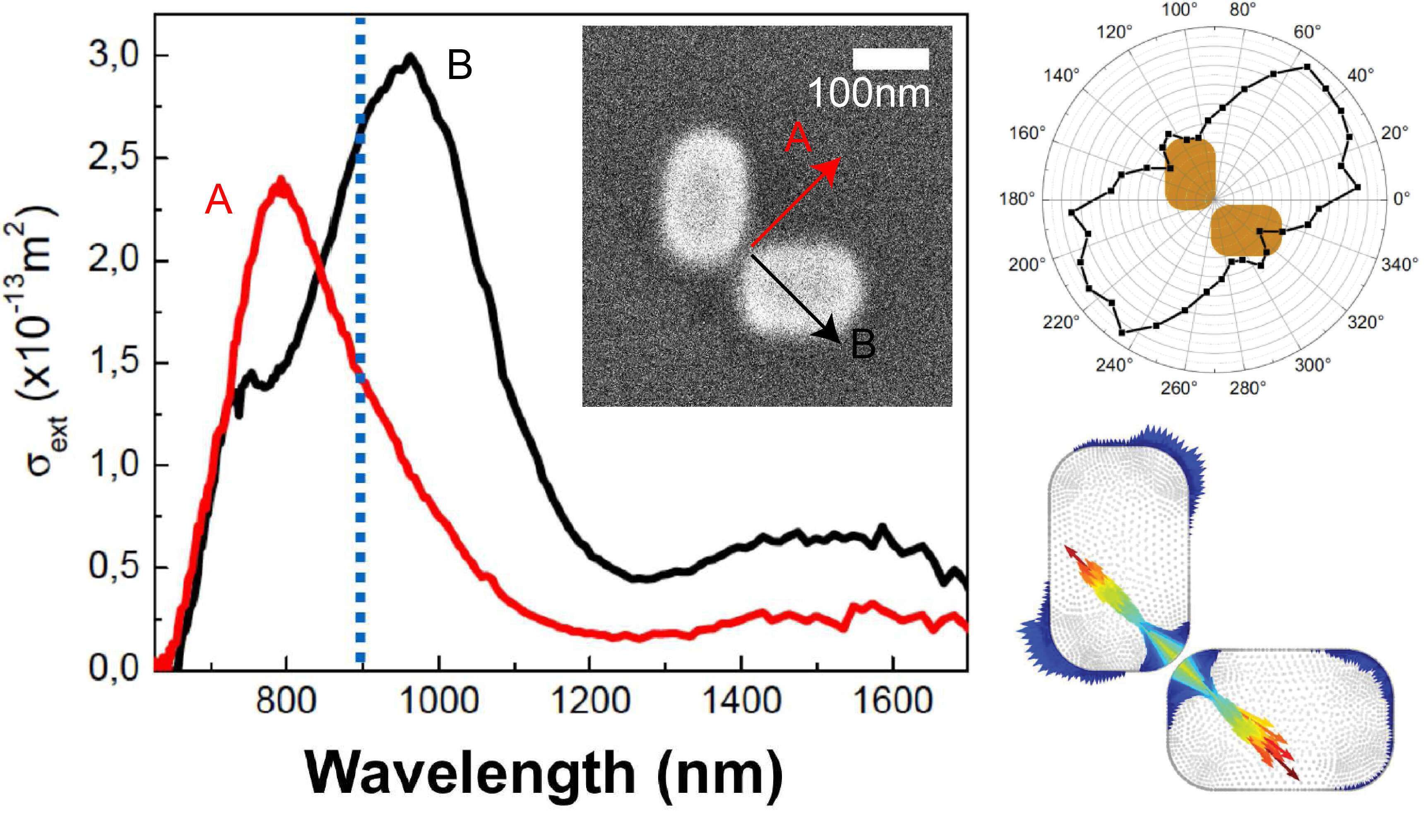
Tuning the Linear and Non-Linear Optical Response of Orthogonal Dimer Plasmonic Antennas for Metasurfaces
We demonstrate that polarization conversion in coupled dimer antennas, used in phase discontinuity metasurfaces, can be tuned by careful design. By controlling the gap width, a strong variation of the coupling strength and polarization conversion is found between capacitively and conductively coupled antennas. A theoretical two-oscillator model is proposed, which shows a universal scaling of the degree of polarization conversion with the energy splitting of the symmetric and antisymmetric modes supported by the antennas. This picture is supported by extensive electrodynamical simulations based on the 3D-Green`s dyadic method.
Using e-beam lithography we fabricated nano-antennas consisting in orthogonal dimers of gold nanorods of fixed widths and heights of 120 and 40 nm, respectively, and with nanorod lengths between 100 and 300 nm. Using Spatial Modulation Spectroscopy on individual antennas, we measured first the “pure” bonding and antibonding states of several representative L = 230 nm antennas. We then measured the intensity of the scattered light along different polarizations for an incident optical excitation polarized along one of the antenna arms. These measurements allowed to quantify the polarization conversion achieved by these nanostructures. We find good agreement with theory for the scaling of mode splitting and polarization conversion with gap width over the range from capacitive to conductive coupling. Next to linear polarization conversion, we demonstrate single-antenna linear to circular polarization conversion, which could offer many interesting sensing applications.
Besides the linear optical properties, we have investigated Second Harmonic Generation (SHG) in these structures. Our experimental results supported by numerical simulations show that both the intensity and polarization of the SHG emission strongly depend on the gap width and antenna arm length. Our results provide strategies for designing the linear and non-linear response of plasmonic metasurfaces.
[1] L. Black, Y. Wang, C. H. de Groot, A. Arbouet, O. L. Muskens, ACS Nano, 8, 6390 (2014)

Figure Absolute extinction cross section of L-shaped dimer antenna (SEM in inset) showing anti-bonding (A) and bonding (B) modes. (Right top) polar plot showing distribution of SHG intensity from L-shape antenna at a pump wavelength of 900 nm. (Right bottom) calculated distribution of nonlinear dipoles in antenna gap.
Leo-jay.Black@soton.ac.uk
Powered by Eventact EMS